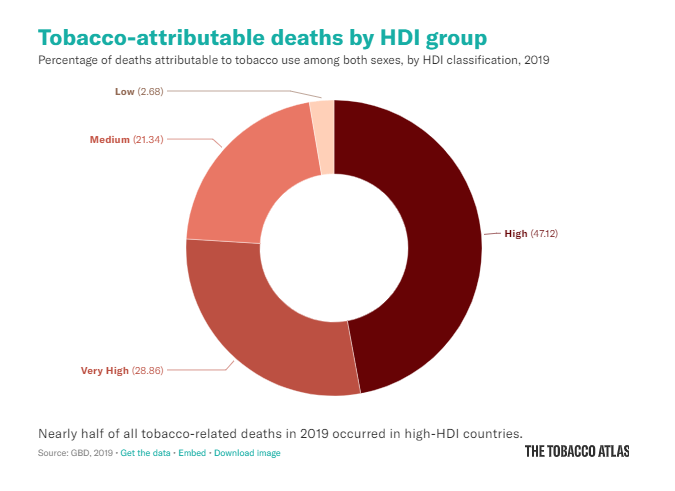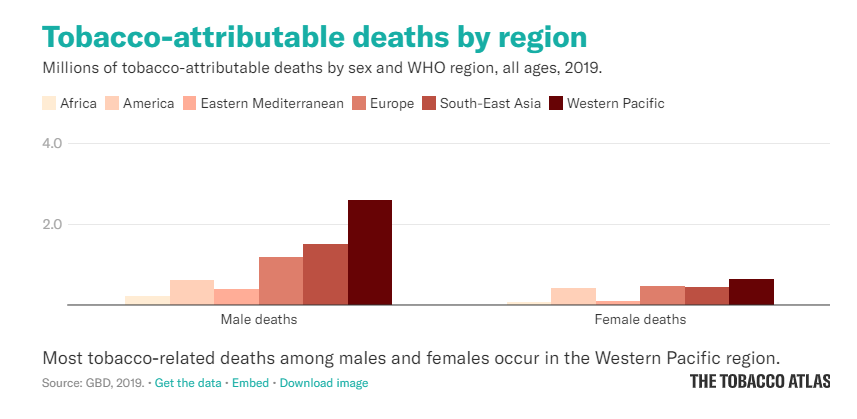6.53 million in adult males, and 2.14 million in adult females in 2019
This is an excerpt of the publication below, with the title above, focusing on the topic in question.
The Health Strategist
Joaquim Cardoso blog
May 31, 2022
Tobacco Atlas
Deaths
May 18, 2022
The death-related burden of smoking is still substantial in high-HDI countries and, in many countries, it is projected to increase dramatically in the coming decades.
The burden is also likely to increase among some populations who currently have a relatively lower smoking-related burden, notably adult females and low-HDI countries.
Tobacco use is a major risk factor for the four main noncommunicable diseases: cancer, cardiovascular disease, chronic lung disease, and diabetes.
In 2019 alone, tobacco use caused more than 8.67 million deaths worldwide (6.53 million in adult males, 2.14 million in adult females).
Most of these deaths (7.37 million) were attributable to smoking, followed by secondhand smoke (1.30 million).
Even though high-HDI countries have seen declines in smoking prevalence, tobacco-related deaths are still substantial in high-HDI countries due to the several-decade lag between changes in smoking prevalence and changes in smoking-related death rates.
In 2019, nearly half of all tobacco-related deaths occurred in high-HDI countries.
However, deaths from tobacco-related diseases are expected to increase in future years in lower-HDI countries as smoking prevalence has been increasing.


In 86 countries, at least one-fifth of all deaths among males are attributable to tobacco use.
These countries generally are high- or very high-HDI countries, mostly located in Europe (43 countries) or the Western Pacific region (19 countries), although all other World Health Organization regions have two or more countries where at least one-fifth of all deaths among males are tobacco-related.

Most tobacco-related deaths among females occurred in the Western Pacific region, with 651,232 deaths in 2019.
However, more than 400,000 tobacco-related deaths among females also occurred in three other WHO regions: Europe, South-East Asia, and the region of the Americas.
With recent increases in smoking prevalence among female adolescents in some countries, the numbers of these deaths will continue to rise.

The lower tobacco-related burden in Sub-Saharan Africa reflects its historically lower smoking prevalence.
However, with an increase in affordability of tobacco products and the tobacco industry’s aggressive marketing in Africa, smoking prevalence has already started to rise or is likely to substantially increase in the future.
With its rapidly growing populations and rising life expectancy, an increase in the number of smokers combined with more years lived with tobacco-related diseases is likely to make Africa suffer the most from future smoking-related burden of death and disease.
At least one in five deaths among males in 43 countries in the European region are attributable to tobacco use.

References
Tobacco-related deaths, by country, by sex, by country income group, and by WHO region:
GBD 2019 Risk Factors Collaborators. Global burden of 87 risk factors in 204 countries and territories, 1990–2019: a systematic analysis for the Global Burden of Disease Study 2019. Lancet. 2020, 396: 1223–49.
Originally published at https://tobaccoatlas.org.












